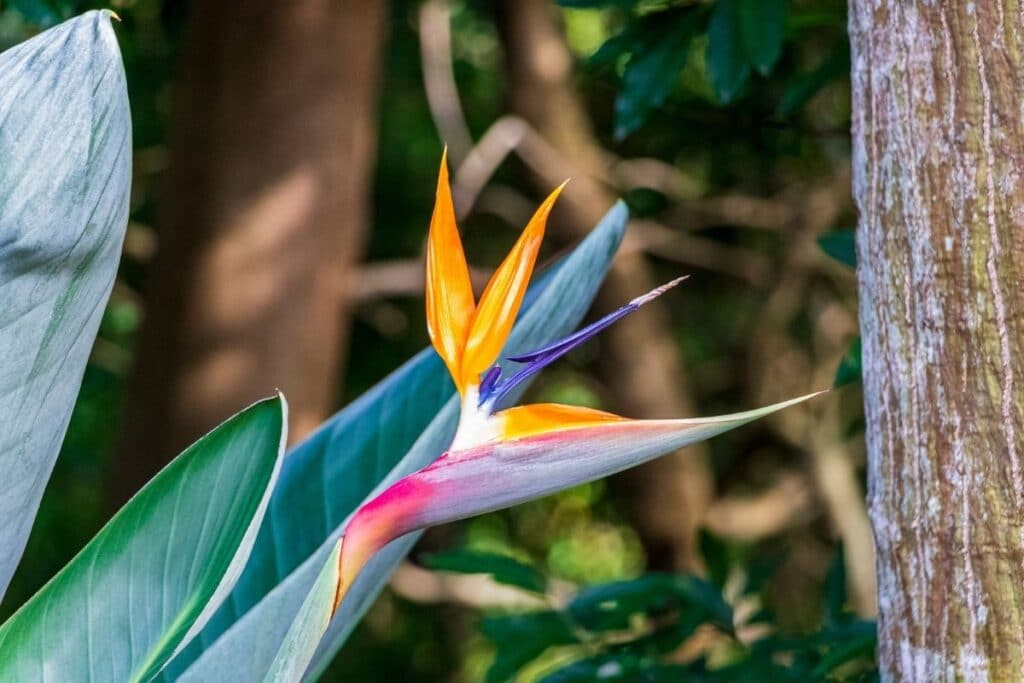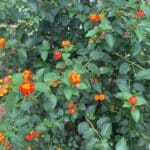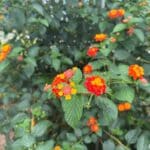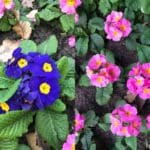If you are thinking about an interesting-looking and very unique plant, then look no further! The bird of paradise flower (scientifically known as Strelitzia) is the one for you!
This plant is so beautiful that you will appreciate nature even more: its colors, its scent, and even the shade it can give to any sunny area are great!
They are also called crane flowers due to their shape. There are five different species of this particular flower, and they are all native to the African continent, more specifically to the southern area (1).
If you would like to learn more about the bird of paradise flowers, continue reading this article. Here you will find everything you need to know about bird paradise flowers.
Interesting Facts about Bird of Paradise
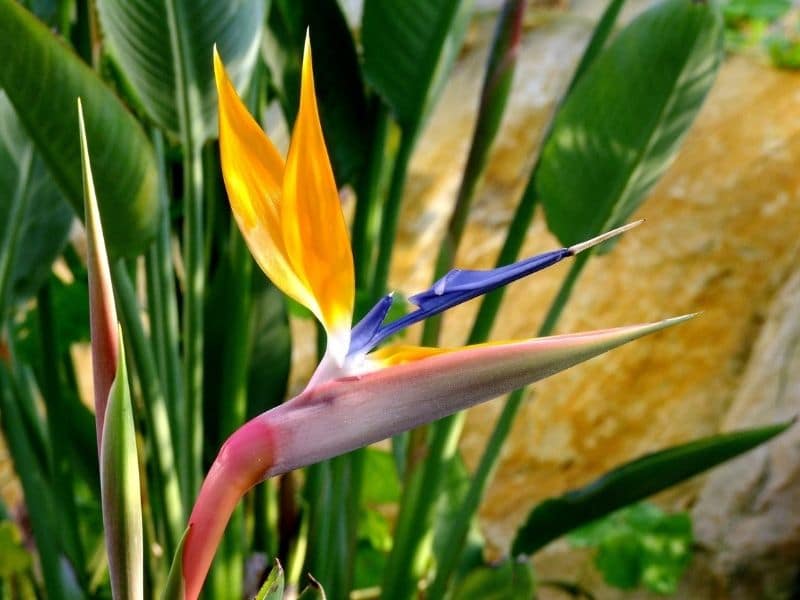
The bird of paradise flower is an evergreen perennial; this means that the plant usually keeps its green foliage throughout the year, but it also means that the plant dies when it frosts and temperatures drop, and then it will reemerge through spring.
Bird of paradise is one of the flashiest flowers you will ever see! They have unique tropical colors, and they will definitely catch everybody’s attention.
As its name suggests, they look like a bird in flight: they have many petals that seem to mimic the bird’s head, but they also resemble a crane. It’s one of nature’s gifts, for sure!
Bird of paradise flowers are scientifically referred to as Strelitzia reginae, and they belong to the Strelitziaceae family of plants. Undoubtedly, they will look great in any garden, but you could also plant them in containers as they easily adapt to space.
Here Are Some Interesting Facts about Strelitzia Plant
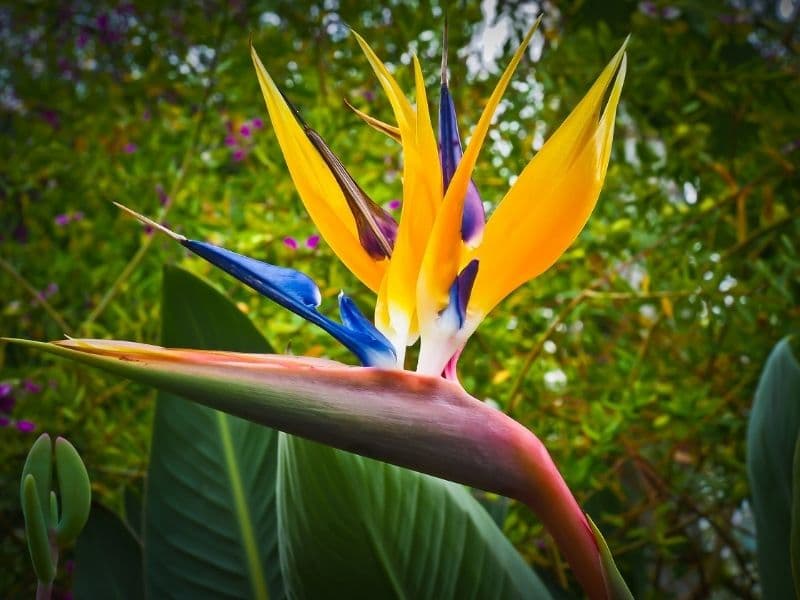
- Bird of paradise can grow up to more than 30 feet tall.
- If they live in healthy conditions, they can produce more than 35 flower spikes every year; this means they are always used as ornamental plants as well.
- Birds of paradise need to support each other: ideally, you will plant them in pairs, so they can grow together.
- Although this plant adapts easily, they are not tolerant of cold weather.
- Bird of paradise flowers could take up to 10 years to bloom, as they need to develop thoroughly first.
- They are often included in Mexican flowers and Hawaiian flowers.
How To Grow and Care for Bird of Paradise Plants
Cultivating these flowers is not difficult at all. Here is everything you need to know before getting your hands dirty:
How to Grow Bird of Paradise from Seedlings
If you already have a bird of paradise flowers’ seeds, you will need to help them before planting them in the soil.
You can do so by activating them; this means you will place them in a cup filled with water, and all of the seeds that stay floating will be discarded. Only choose the ones that drowned; this way, you will have more chances of germinating them.
Then you will need to put them in a closed plastic bag with soil. Do not cover all of them, as they require light in order to sprout. Once they do, take them out of the bag, and choose the right spot to sit.
Ideally, this place will have direct sunlight, but it shouldn’t receive it for more than a couple of hours a day. Also, try to avoid midday’ sun rays.
If your seeds are growing well, you will need to feed them with organic fertilizer every two weeks maximum.
You can transplant the seedlings once they have grown and have at least five leaves. You should add more organic matter (it would be great if you add compost), and then plant them outdoors or leave them indoors.
If your paradise plants grow outdoors, you must wait until they are six months old. This place could receive full sunlight, although it would be best if it was bright indirect light. If you leave the plants indoors, then do keep them underneath the sunlight.
Saving your Seeds
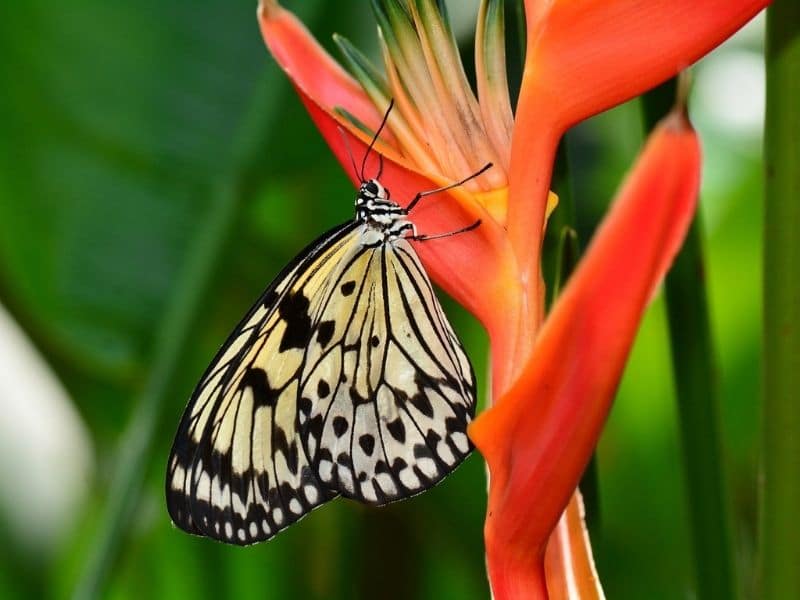
If you live in South Africa, you wouldn’t have to worry about this, because nature does it for you. However, if you live in any other country in the world and try to grow the bird of paradise flowers, you may need to pollinate your plants by hand.
To do this, you will have to choose your best flower and split two blue petals that tend to fuse together. These are called the anthers.
There, you will find a white substance, which is the pollen, carefully remove it with a small paintbrush, and “paint’’ it onto another flower’s stigma (which is the protruding white tip between the petals).
If you succeed in doing this, you will have seeds in a couple of months; which is excellent news, because it will allow you to have your own field of the bird of paradise flowers.
Only then will you be able to start the previously explained process of planting the seeds.
Soil Requirements
- The soil where you will plant needs to be always moist, especially during spring and summer, when the bird of paradise flower will consume most water.
- During fall and winter, you can reduce the water they receive.
- Ideally, you will give your growing plants the best possible conditions to thrive. This also means organic soil, which you can have if you compost, or you can purchase as well.
- These plants should be repotted every spring; otherwise, they will lack room to expand.
- Bird of paradise flowers needs to have a good drainage system.
Water Requirements
Water your bird of paradise flowers thoroughly until they are six months old. You must touch its soil before you water them; this will tell you how much watering they need.
However, overwatering can lead to root rot, which is one of the most prevalent diseases that affect the Bird of Paradise.
When it’s fall and wintertime, you will not have to water them as often. In fact, you should only do so once a week (and always test the soil first).
Sun Requirements
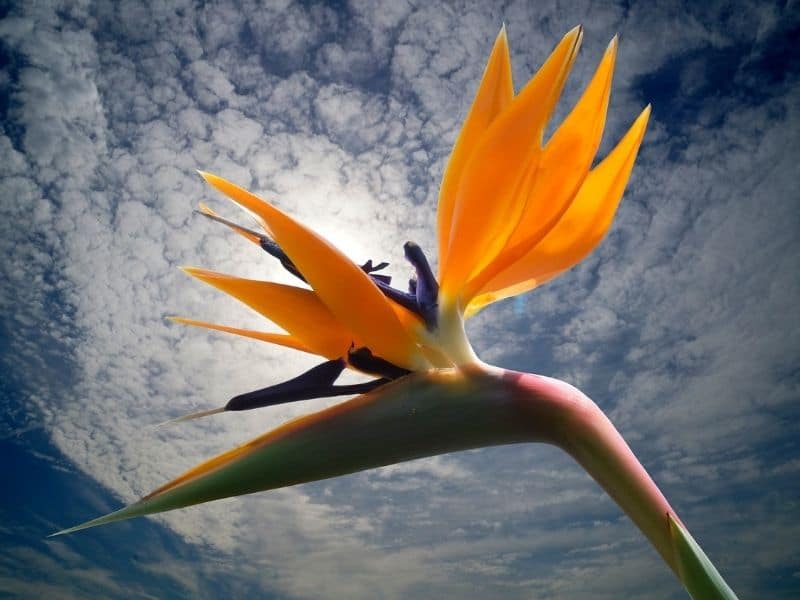
Bird of paradise flowers needs plenty of suns to thrive! If you grow your plants outside and place them in an area that receives at least 6 hours of direct sunlight a day, then your plants will grow healthily.
On the other hand, if you grow them inside, they should too receive plenty of hard sunlight in order to thrive.
Pruning your Plants
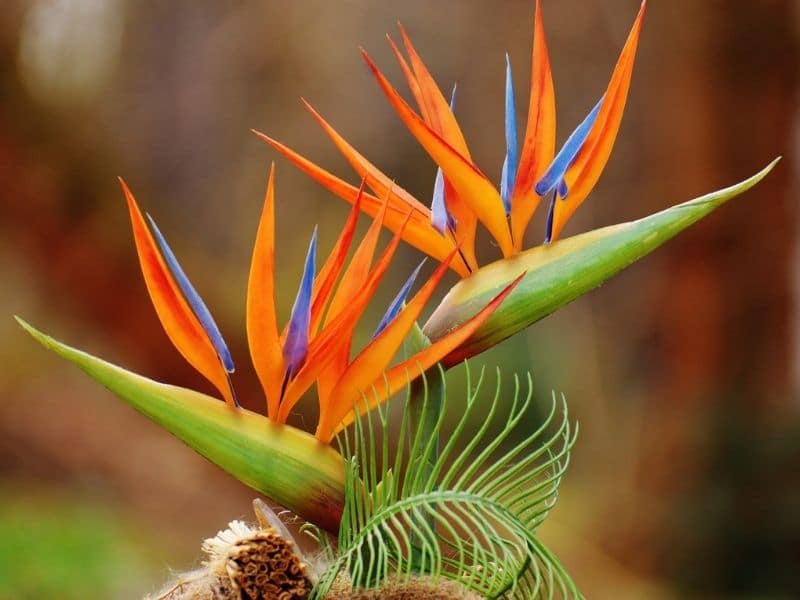
You will need to prune the bird of paradise flower; however, this is not difficult. You can just remove all of the dead leaves and maybe the plant’s older flower stalks; otherwise, they could develop fungus or any other related plant diseases.
Leave them on the ground as a cover; this will also decompose and form a good organic soil to feed your plants.
Propagating Bird of Paradise Flowers
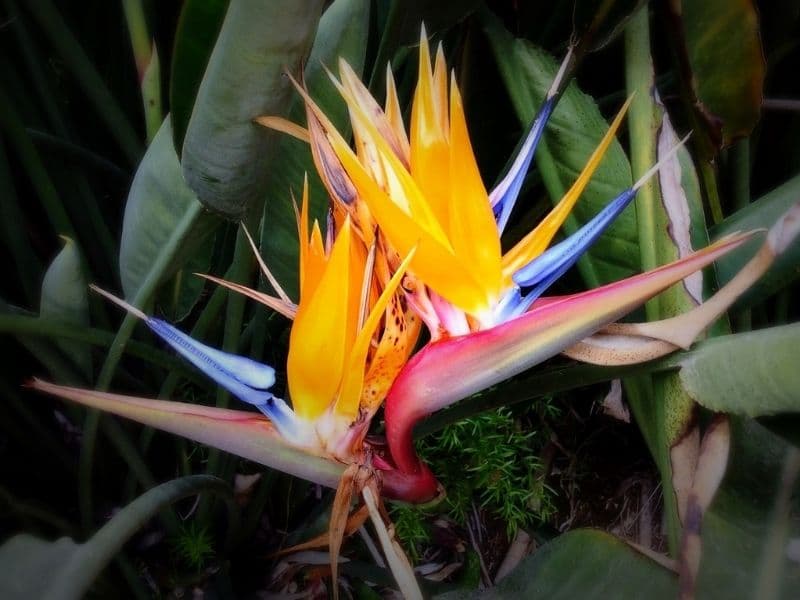
Once your flowers have blossomed, you can take a few of the plants and repot them. Please do not take all of them at once, though, because they need to be crowded to thrive.
Popular Types of Bird of Paradise Flowers
Many people think there is only one type of bird of paradise flower, and they will be surprised to know that there are many more! Here are the most common types:
Jungle Bird of Paradise
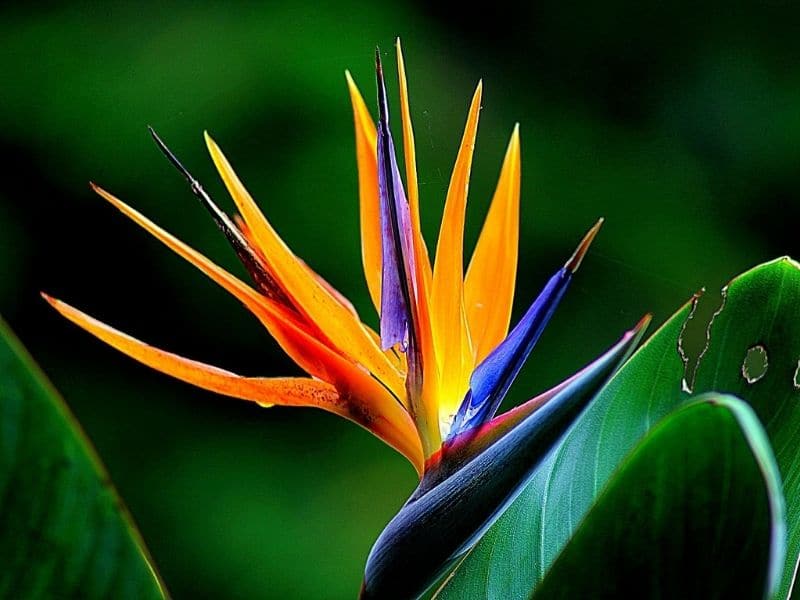
This is the common Strelitzia reginae type of plant that most of us know. They love a humid environment and hot climates and can grow up to 30 inches in height if left in the wilderness.
This bird of paradise flower has blue petals and orange sepals (which are the ones that protect the inner flower).
They prefer to grow in clumps, so avoid separating them; otherwise, they may die.
Strelitzia nicolai (white bird of paradise)
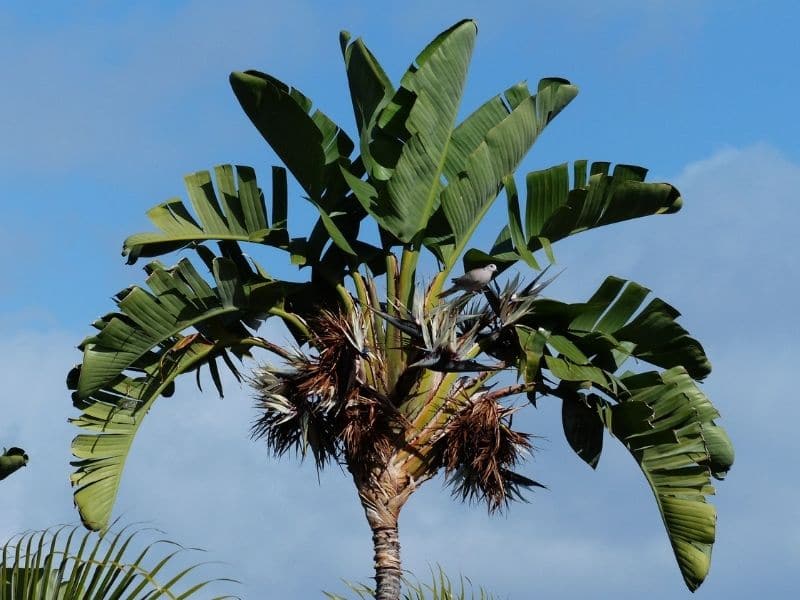
This beautiful variety of the bird of paradise flower has white and blue petals. They will thrive best in the desert, so if you happen to have one, do not water them regularly, otherwise, they will be at risk of having fungal diseases.
They can grow up to 40 feet in height, and they will catch everyone’s attention thanks to its beauty! They are also referred to as Giant birds of paradise, because of their size; they are even the tallest of all bird of paradise flowers or plants.
White Bird of Paradise plants are sometimes mistaken with banana plants, however unlike bananas, Bird of Paradise plants have alternating leaf development patterns.
Strelitzia alba
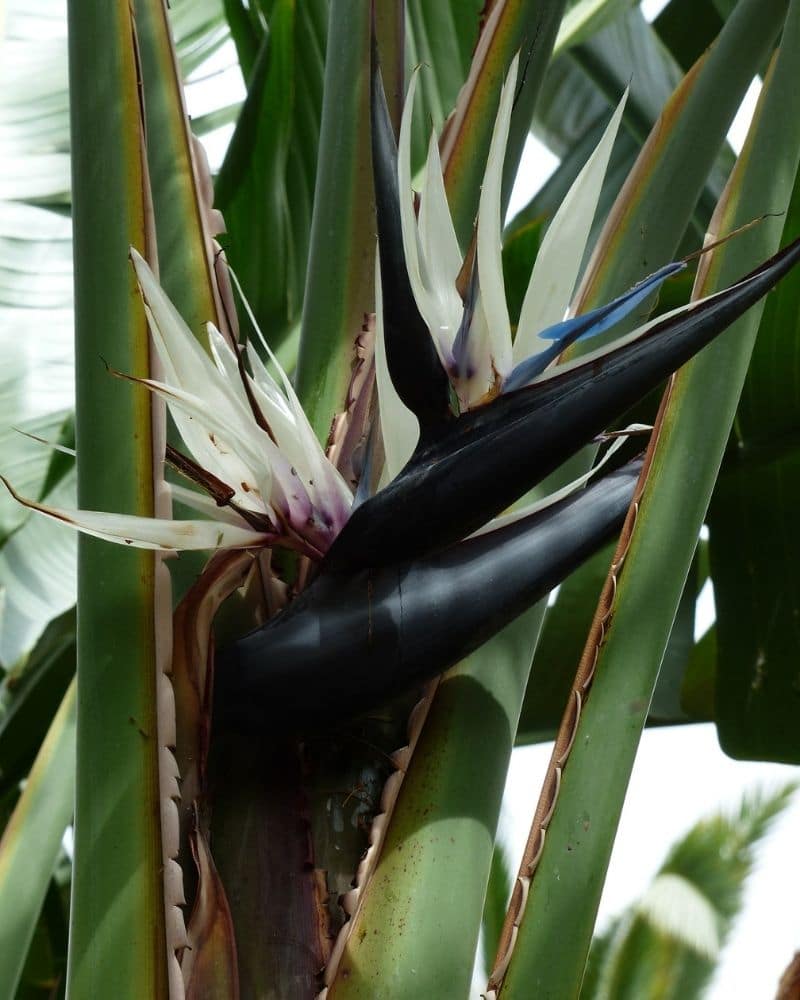
This plant is native to South Africa, and it is challenging to cultivate in other areas (although it is not impossible to do so). It has white petals, and they lack the distinctive blue that other varieties of Strelitzia plants have. They can grow up to 30 feet in height.
Strelitzia caudata or Mountain Strelitzia
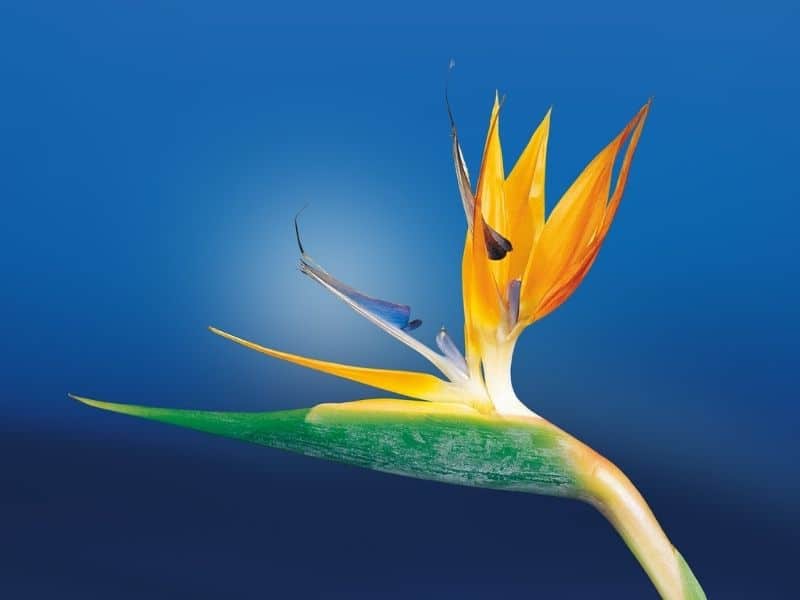
Also known as ‘’wild banana’’. They are native to Zimbabwe, Mozambique, and some areas in South Africa. They can grow up to 20 feet in height and do not have branches.
FAQs
Here are some answers that will help with your tropical plants:
Is Bird Paradise indoor or outdoor?
Bird of Paradise (Strelitzia reginae) can be grown both indoors and outdoors. It is commonly used as a houseplant but can also thrive in gardens in tropical or subtropical climates.
Why are the leaves of my bird of paradise curling?
Curling leaves on a Bird of Paradise may indicate underwatering, low humidity, or exposure to drafts. Ensure the plant is receiving adequate water, maintain moderate humidity, and protect it from cold drafts.
What is the best fertilizer for bird of paradise?
A balanced, water soluble fertilizer with a formulation like 10-10-10 or 14-14-14 is suitable for Bird of Paradise. Fertilize during the growing season (spring and summer) but reduce feeding in fall and winter months.
Why are the leaves on my Bird of Paradise turning brown and dry?
Brown and dry leaves on a Bird of Paradise may be caused by underwatering, low humidity, or exposure to direct sun. Ensure the tropical plant receives consistent watering, maintain humidity, and protect it from intense bright light.
Should I cut off brown leaves on bird of paradise?
It’s advisable to trim brown and dry leaves from a Bird of Paradise. Use clean, sharp scissors or pruning shears and cut the damaged leaves near the base. This not only improves the plant’s appearance but also encourages new, healthy growth.
Conclusion
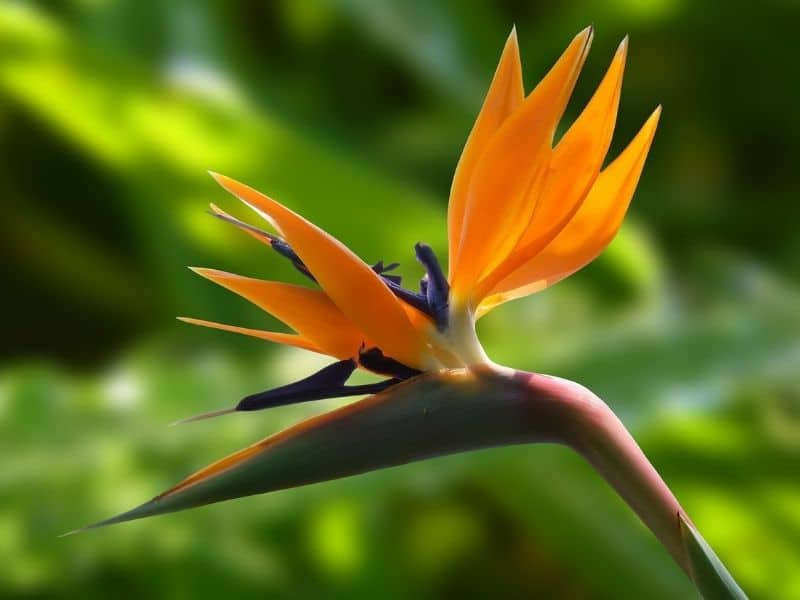
Growing bird of paradise flowers, with their exotic beauty and vibrant orange blooms, is not as difficult as it may seem at first, especially when armed with the right bird of paradise plant care tips!
Even if you’re a gardening novice, this article will guide you through the process, from finding the perfect sunny spot to ensuring healthy soil and watering practices, so you can cultivate a successful bird of paradise flower field.
Share your journey with us if you embark on planting this exotic gem – its stunning presence will definitely be a showstopper in your garden!
Up Next: Bird of Paradise Flower Meaning and Symbolism
References
Reference List:
(1) Aiello, D., Polizzi, G., Crous, P. W., & Lombard, L. (2017). Pleiocarpon gen. nov. and a new species of Ilyonectria causing basal rot of Strelitzia reginae in Italy. IMA fungus, 8(1), 65–76. https://doi.org/10.5598/imafungus.2017.08.01.05
Close
*Image by depositphotos.com/ArkadijSchell

